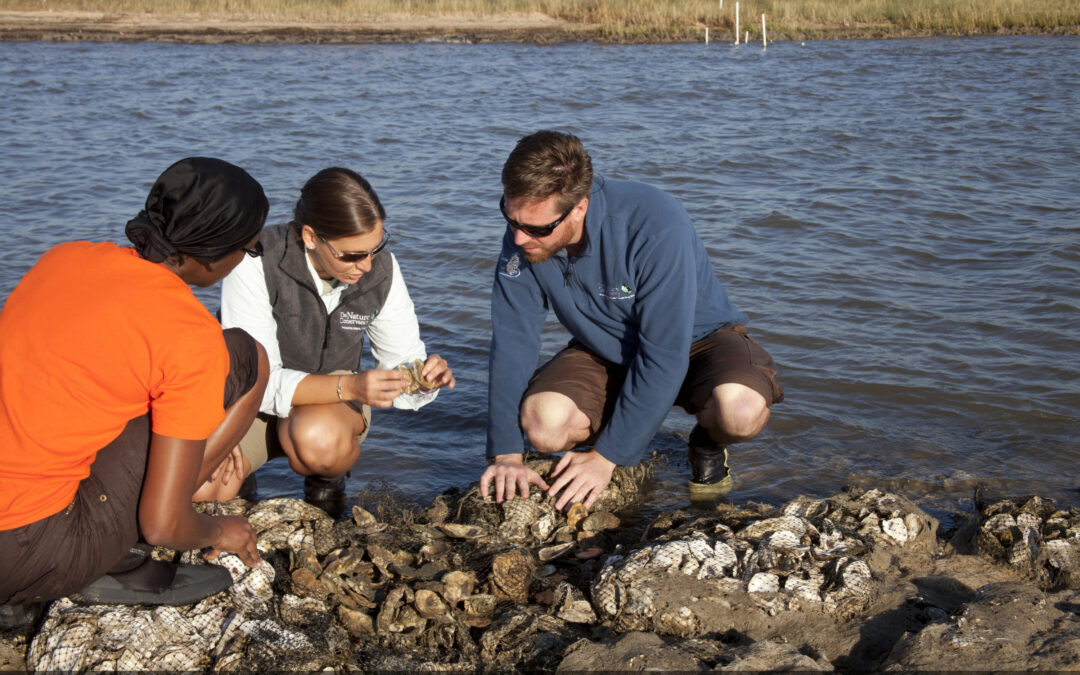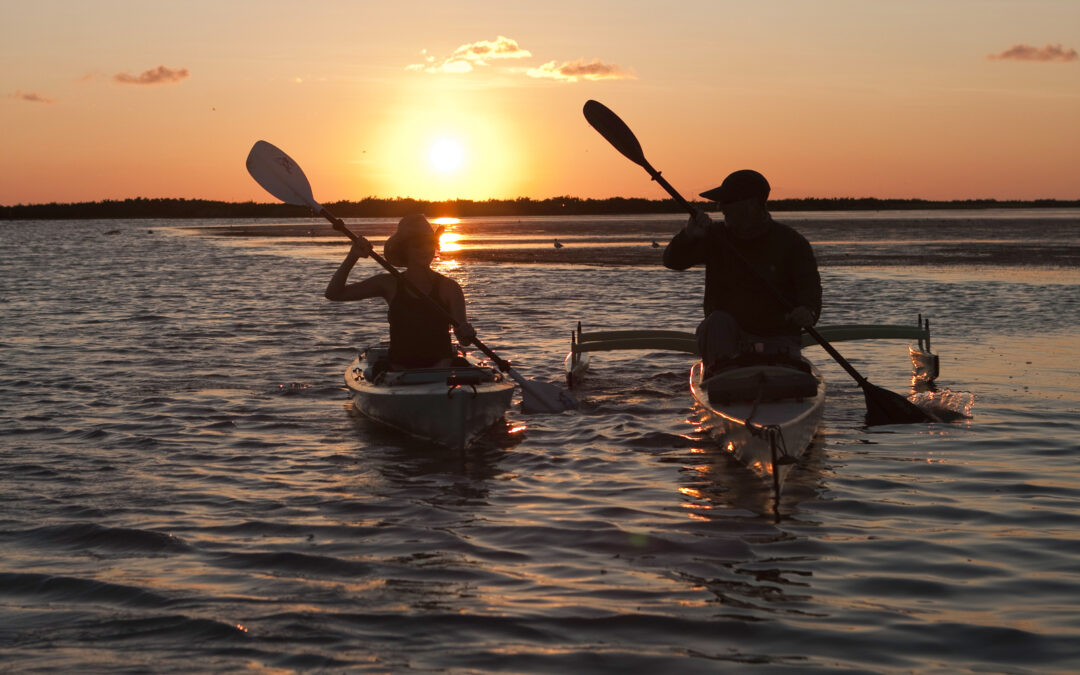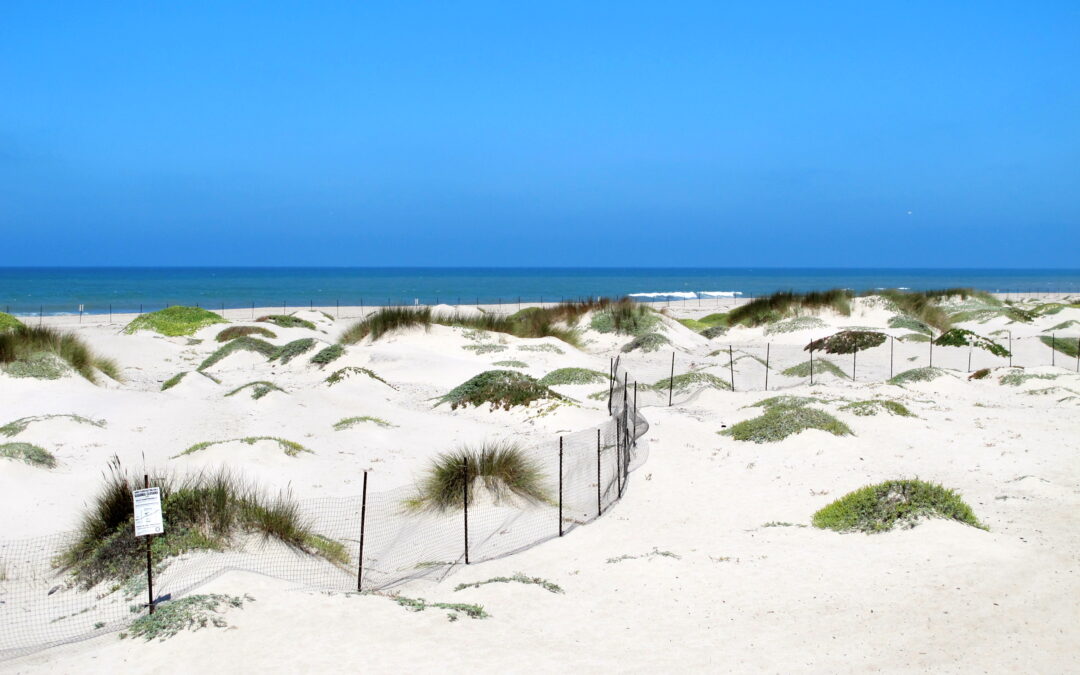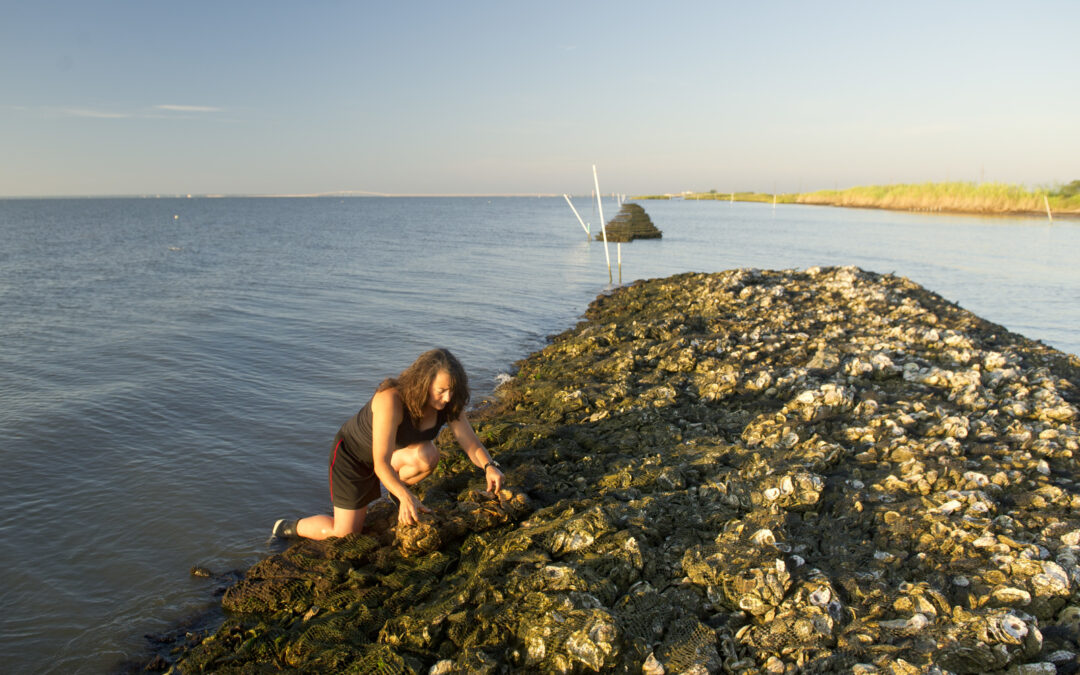
by Morgan Chow | Apr 11, 2018
(ALL INTERNAL, LIMITED EXTERNAL RIGHTS) October. 2011. TNC’s Lucy Magambe, Mary Kate Stubljar and Jeff Dequattro inspecting some new oysters on the constructed reefs at Alabama Port (ARRA). Photo credit: © 2011 Hunter Nichols

by Morgan Chow | Nov 10, 2016
(ALL RIGHTS) June 2010 – Aransas Pass, Texas. Will Myers and his daughter Wynn kayak during sunset at Lighthouse Lakes, a series of four designated paddling trails within Redfish Bay. The trails meander through an extensive black mangrove estuary into sloughs and back lakes, providing paddlers with ample bird-watching and fishing opportunities within the maze of tidal channels and flats. Photo Credit: Erika Nortemann/© 2010 The Nature Conservancy

by Kelly Leo | Nov 9, 2016
Dunes at Ormond Beach, Ventura County. Photo credit: Carey Batha

by David Frank | Oct 28, 2016
Artificial oyster reef built to restore the oyster population and protective oyster reefs in Mobile Bay, Alabama. In July 2009, the National Oceanic and Atmospheric Administration (NOAA) awarded the Conservancy’s Mobile Bay Coastal Restoration project a 2-year grant through the American Recovery and Reinvestment Act (ARRA) to restore coastal habitats in south Mobile County, Alabama. Working in collaboration with partners, the Conservancy is using the funding to create a living shoreline oyster project along two stretches of eroding shoreline in Mobile Bay and Portersville Bay. Photo Credit: Ami Vitale

by David Frank | Oct 28, 2016
The Nature Conservancy, its partners and over 500 volunteers started to build a 224-foot living shoreline at Pelican Point along Mobile Bay, Alabama. In total, 20,500 interlocking concrete blocks will be stacked along the shore to form the foundation of four oyster reefs. The reefs will protect 329 feet of natural shoreline, helping to minimize erosion, protect coastal dunes and enhance natural habitat. Photo credit: Erika Nortemann





